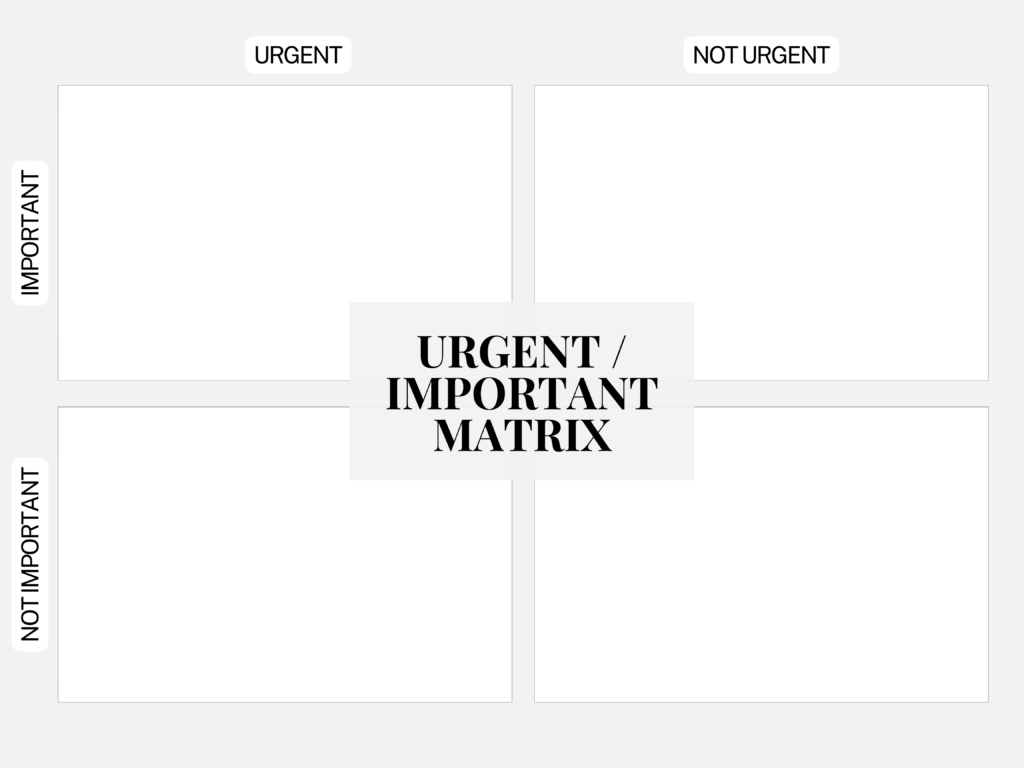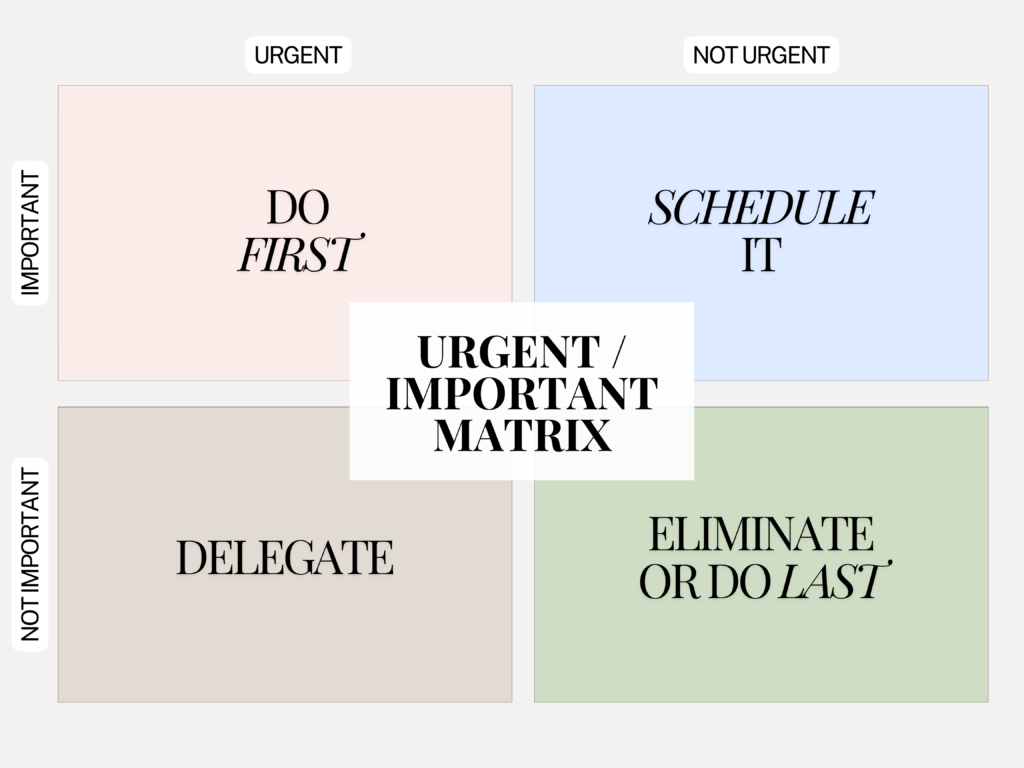How to Be More Productive Using the Urgent/Important Matrix
TOOLKIT / 26 SEPTEMBER 2024

If you’re anything like me, juggling business responsibilities and personal commitments can often feel overwhelming. As a business owner, I was constantly bombarded by urgent tasks, which left me little room to focus on what truly matters. Always searching ‘how to be more productive’ and testing out the latest productivity tools and apps, the one change that truly transformed how I manage my time was adopting the Urgent/Important Matrix.
Developed by former US President Dwight D. Eisenhower, this method (also known as the Eisenhower Matrix or Decision Matrix) helps categorise tasks into four quadrants based on urgency and importance. It’s simple to use and incredibly effective for any busy entrepreneur looking to gain back control of their time.

How You Can Implement to Boost Your Productivity
To start, all you need is a blank piece of paper. Draw a grid with four boxes. Label the top-left box Urgent, and the top-right one Not Urgent. On the left side, label the top row Important and the bottom row Not Important. Now, fill in the tasks from your to-do list for the day or week, placing them in the appropriate quadrant.
By visualising your tasks this way, you can immediately see what needs urgent attention, what can be scheduled, what can be delegated, and what can be eliminated altogether.
Here’s how to use it effectively:
Quadrant 1 – Urgent and Important
These are tasks that require immediate attention, such as urgent client demands or crises. This is your “Do First” category.
Examples:
- Finalising a client proposal with a fast-approaching deadline.
- Managing a sudden supplier issue that could affect your store’s inventory.
Quadrant 2 – Important but Not Urgent
Tasks that are crucial for long-term growth but can often be pushed aside. This is your “Schedule It” category.
Examples:
- Developing a long-term marketing strategy for your brand.
- Researching industry trends or upskilling in a new software that will improve your service offerings.
Quadrant 3 – Urgent but Not Important
Tasks that demand attention but don’t contribute significantly to your core goals. This is your “Delegate, if possible” category.
Examples:
- Responding to routine customer service emails that your assistant could handle.
- Attending non-essential meetings or phone calls.
Quadrant 4 – Not Urgent and Not Important
These are distractions and time-wasting activities that don’t add value. This is your “Eliminate, or Do Last” category.
Examples:
- Browsing social media without a business objective in mind.
- Organising your office when it’s already tidy.
By categorising your tasks this way, you’ll spend less time reacting to distractions and more time focusing on what truly matters to your business growth.

How This Simple Framework Boosted My Productivity
Since adopting this system, my ability to prioritise and manage time has completely transformed. I no longer feel overwhelmed by the breadth of tasks that are never ending and I feel confident in knowing that I am allocating my time in the most efficient way to deliver the goals I want to achieve.
Here’s how it worked for me:
Focus on What Really Matters
Before using the matrix, I found myself constantly reacting to urgent tasks, neglecting important ones like long-term planning. Now, I’m more focused on Quadrant 2 activities, like developing marketing strategies and investing time in professional development – tasks that pay off in the long run.
Less Stress, More Control
The matrix helped me step back and assess whether a task is truly urgent and important. This has led to a clearer focus, reduced stress, and more deliberate work. Instead of reacting immediately, I focus on what truly drives results in Quadrant 1, tackling urgent tasks with a plan.
Eliminating Distractions
I used to spend too much time on “Urgent but Not Important” tasks—like checking non-critical emails or attending meetings that weren’t essential. Now, I’m comfortable delegating those distractions, freeing up more time for meaningful work in Quadrant 2.
Better Time Management
The matrix made me realise how much time I wasted on “Not Urgent and Not Important” tasks. Activities like browsing social media without a goal or shuffling paperwork no longer clutter my schedule. By eliminating these distractions, I gained back hours in my day.
By adopting the Urgent/Important Matrix, you can stop reacting to every task that pops up and start focusing on what truly moves the needle. Give it a go—you may be surprised at how much time you can reclaim and how much clearer your priorities become.
For more productivity tips and insights, sign up for our newsletter and get them delivered straight to your inbox!





Read the Comments +